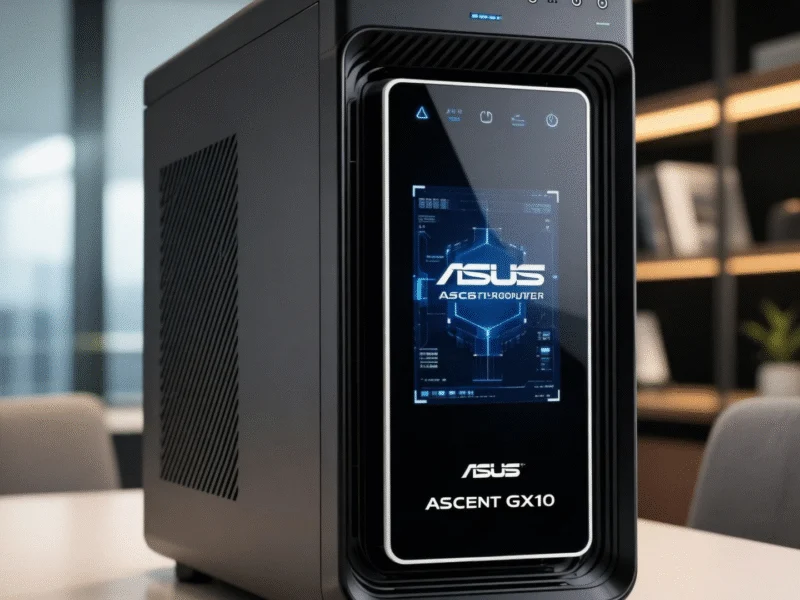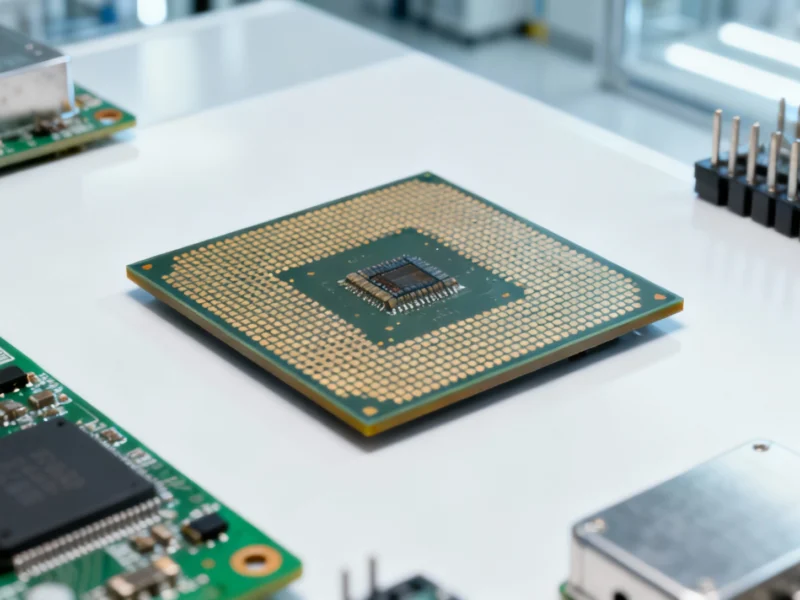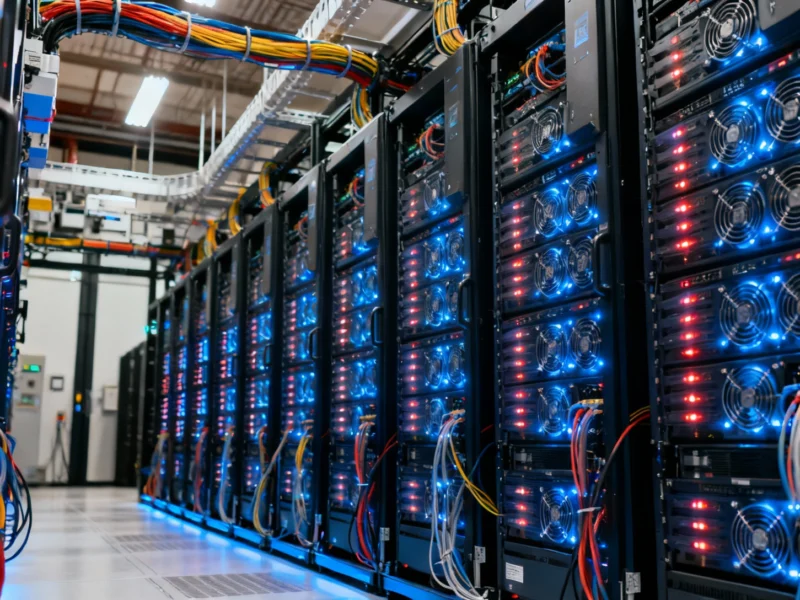ASUS has unveiled the groundbreaking Ascent GX10, a compact desktop computer that brings supercomputer-level artificial intelligence performance to developers’ desks. Scheduled for release on October 15, 2025, the system represents a significant leap in making high-performance AI computing more accessible to researchers, data scientists, and developers working with large language models and complex AI workloads.
Revolutionary Performance in Compact Form Factor
The Ascent GX10 achieves its remarkable capabilities through NVIDIA’s GB10 Grace Blackwell Superchip, which integrates both CPU and GPU components into a unified architecture. The system delivers up to 1 petaflop of AI performance and 128 GB of unified memory, capable of handling models with up to 200 billion parameters. Despite this immense power, the unit measures just 150 × 150 × 51 mm, representing a breakthrough in small form factor computing according to recent analysis of desktop innovation trends.
Comprehensive AI Software and Storage Solutions
Built around the complete NVIDIA AI software stack, the Ascent GX10 enables local inference, model fine-tuning, and rapid prototyping across multiple domains including robotics, computer vision, and vision-language modeling. The system offers multiple SSD configurations to accommodate varying workflow demands:
- 1 TB PCIe 4.0 ×4 for standard development workloads
- 2 TB PCIe 4.0 ×4 for extended model training
- 4 TB PCIe 5.0 ×4 variant for intensive data processing
Enterprise-grade security features ensure sensitive datasets remain local, addressing growing concerns about data privacy in AI development as industry experts note increasing regulatory attention on AI systems.
Scalable Architecture and Advanced Thermal Management
Scalability stands as a cornerstone of the Ascent GX10’s design philosophy. Two units can be networked through NVIDIA ConnectX-7 200 Gb/s interfaces, effectively doubling computational power to 2 petaflops and expanding unified memory to 256 GB. This modular approach to computing infrastructure enables organizations to scale their AI capabilities as project requirements grow.
The thermal management system represents engineering excellence with seven fan control levels, five copper heat pipes, ultrawide fins, and dual 140 × 80 mm fans. This sophisticated cooling solution maintains optimal performance during extended AI training sessions while operating quietly enough for office environments.
Strategic Position in ASUS AI Ecosystem
ASUS positions the Ascent GX10 as a strategic component within its broader AI portfolio, which spans from workstations to large-scale platforms like HGX B300 and GB300 NVL72. According to ASUS Senior VP Jackie Hsu, the company aims to support customers in expanding their presence across the NVIDIA ecosystem, providing comprehensive solutions from desktop to data center.
The timing of this release coincides with significant shifts in the global AI landscape, as data from recent market analysis indicates changing dynamics in AI hardware availability. Additional coverage of enterprise AI infrastructure suggests growing demand for localized AI computing solutions that can operate independently of cloud dependencies.
Transforming AI Development Accessibility
The Ascent GX10 represents a paradigm shift in making high-performance AI computing accessible to smaller teams and individual researchers. By bringing supercomputer-level performance to the desktop, ASUS enables rapid iteration and experimentation that was previously limited to well-funded research institutions or cloud computing environments.
Related analysis of AI hardware trends indicates that compact AI systems like the Ascent GX10 could accelerate innovation across multiple industries by lowering barriers to entry for AI development. The system’s ability to handle billion-parameter models locally opens new possibilities for real-time AI applications in healthcare, autonomous systems, and creative industries.



